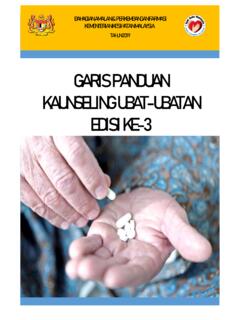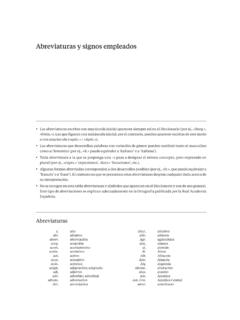Transcription of Below-Knee Amputation Care | Patient Guide - Hanger, Inc.
1 Patient Guide Below-Knee . Amputation CARE. TABLE OF CONTENTS. WHERE TO Who will provide my prosthetic care?..2. What will my insurance cover?..3. How long does rehabilitation take?..4. What is going to happen next?..6. RECOVERY AND How wilI I recover physically?..7. How to keep your limb How will I heal emotionally?..9. INITIAL What happens at my first prosthetic evaluation?..10. What are the parts of a prosthetic leg?..11. How is the prosthesis held to my limb?..12. How will I learn to use my prosthesis?..13. LIFELONG How do I care for my limb?
2 14. Common limb How do I care for my prosthesis?..16. What shoes can I wear?..17. What home aids and modifications will I need?..17. When will I get a replacement?..18. What's next?..19. WHERE TO BEGIN. What do you do when an injury turns your life upside down and doctors say you'll never walk again? Find someone who believes, like you, that your potential is unlimited. After Cameron Clapp lost both legs and an arm in a train accident, he surrounded himself with people who supported his vision of a future that included walking, surfing and motivating others.
3 The people at Hanger Clinic have been behind him every step of the way. Impossible is not a fact; it's an opinion.. Cameron Clapp Losing your limb can be overwhelming, but you are not facing this challenge alone. Many people will help you adjust to your Amputation and return to a healthy, active lifestyle. This includes your team of healthcare professionals, such as your physician, prosthetist, physical therapist, nurse and occupational therapist. YOUR PROSTHETIST: LOCATION: PHONE NUMBER: 1. Who will provide my prosthetic care? As you begin your rehabilitation, you will work with a prosthetist who is trained in the design, fabrication and fitting of artificial limbs (prostheses).
4 Your prosthetist has skills and experience that will empower you to achieve your goals. It is important to talk to your prosthetist about your desires, expectations and concerns so that he or she can best address your needs. You will continue to partner with your prosthetist for routine maintenance, expected adjustments and future prosthetic care. Hanger Clinic prosthetists are board certified. A certified prosthetist has successfully completed years of specialized training and passed a thorough examination administered by the American Board for Certification in Orthotics and Prosthetics (ABC) or the Board of Certification (BOC).
5 Your prosthetist will work closely with your physician, who will monitor your health, and your physical therapist, who will teach you how to use your prosthesis. 2. What will my insurance cover? The cost of a prosthetic leg includes the specialized services we provide. Your prosthesis is a custom-made device that takes time and skill to design and fit. The cost of your device can vary greatly depending on the design that is medically necessary for you. Fees may be charged for modifications and adjustments that are necessary as your limb changes shape and size, but most initial adjustments and follow-up appointments are provided at no charge.
6 Please contact your prosthetist with any financial concerns. Prosthetic care is covered under most health insurance plans once deductibles and copayments are met. Our staff will help you understand your coverage and coordinate with your insurer. Please let our office know about any changes in your insurance. In addition, there are government funded programs available for people with physical challenges which may provide additional support. IMPORTANT THINGS TO REMEMBER: Hanger Clinic generally requires a physician's prescription for all prosthetic services, supplies and devices; especially if we are billing an insurance company.
7 Insurance approval for new supplies or devices may take time. Do not wait until the last minute. Our team of prosthetists and office administrators want the best results for you. Please be Patient as we partner with your physician's office and your insurance company to get approval for your supplies. Feel free to follow up with us about the status of your claim. 3. How long does rehabilitation take? This is a general rehabilitation timeline for lower limb Amputation . You may not experience all of these steps in exactly these timeframes because everyone's experience is unique.
8 Talk to your prosthetist if you have questions about the expectations for your individual rehab. 5-8. 3-4 WEEKS. 0-2. WEEKS. WEEKS. IILMITOAYY. BLILM. MECI. BN. OAIOLV TIR. E EA. R. LVIT. ICAION ER Y H. P I T. EG. NRIVNERY. POP ST-O NEGACIL. O. H. I. PRE-OP POS INEGAL RE. TA-LOH. - TEOR. HE. PY. PRE-OP VE. OO. PC. R SV. Y. PRET-O PP OR. VER YR. CO. -OREC. -OOPS. STP. Incision healed PRE-OPPO ST-POOP. PR. P E -OP Measurements, -O. Suture removal casting and/or Post-op protector scanning for Evaluation for or dressing applied first prosthesis prosthesis Arrange peer visit Begin limb shaping and pre-prosthetic training 4.
9 6-12. MONTHS. 4-6. 2-4. MONTHS. MONTHS. E. E CAR. RG. ECOAN. C. OAINFRGEL. LL. RE LL FEG. OIN. E. R C A E N. RE CA G LTIFIO. CANGELON TIORNA. U. G O RNA. ON ELLIF M. IO. YAATTU. Receive definitive I FEL LIF L I. UTR. M prosthesis L ION BAIT. TMY. MIO. O NA T A L. I BYI L. ORNA TI R IN LIOT. T. LIIM. R AATTIUM ATU TIO AB Follow-up care U. T IM N G I N. LI M Limb volume A. MYBIL H Y. TEA IT L I IA. E ALING IN stabilization Maintenance and N G replacements Ongoing therapy Fit initial prosthesis and prosthetic adjustments Begin prosthetic gait training Individual experiences will vary.
10 5. What is going to happen next? POST-OP LIMB CARE. Your doctor may prescribe a shrinker to help shape your residual limb and/or an AmpuShield to protect your leg from injury (see page 8). FIRST PROSTHETIST MEETING. Your prosthetist will get to know you and ask about your daily activities. He/she will listen to your goals and then use his/her clinical expertise to design the right prosthesis for you. INITIAL PROSTHESIS. When your residual limb is sufficiently healed, you will be measured and fit with a prosthesis. The prosthesis you take home will be custom made using materials most appropriate for your needs.



